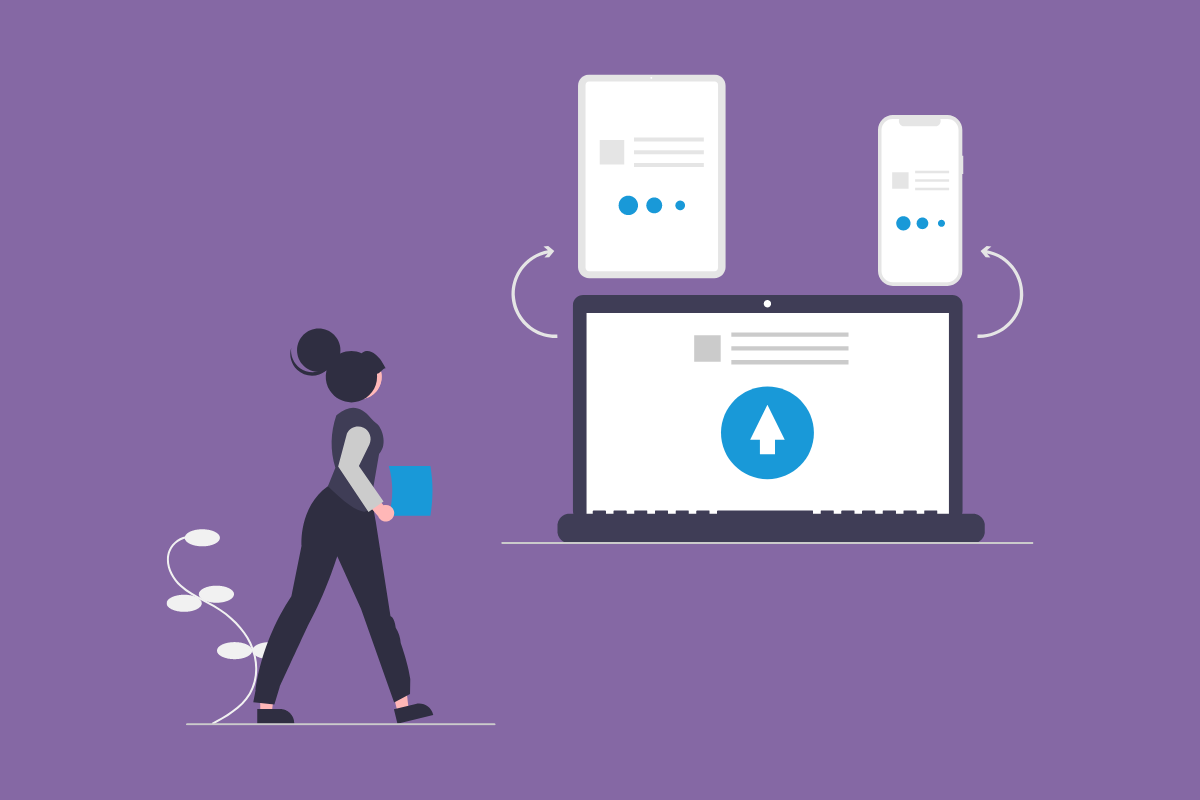Microsoft Azure migration services offer the potential to migrate on-premises servers, web apps, virtual desktops, and workloads to the Azure environment for serverless operations. However, a seamless transition to prevent application downtime and operational disruptions depends on expanding your knowledge and implementing expert guidance from professionals who ensure migration readiness.
Migrating servers to the cloud is becoming an essential step in digital transformation. Statista shows that 73% of enterprises choose hybrid cloud migration in 2024, with 14% using multiple public clouds and 10% using a single public cloud VMS like Microsoft Azure. Discover everything you need to know about the Microsoft migration process to ensure a successful migration.
What Are Azure Migration Services?
Azure Migrate is a platform that guides organisations through a thorough discovery and assessment to evaluate migration readiness, assess on-premises servers to define the new infrastructure needs, and migrate databases, workloads, and virtual desktops to a serverless Azure environment.
Microsoft Azure Services uses two main tools – Azure Migrate: Discovery and Assessment and Azure Migrate: Server Migration. The Azure Migrate Discovery and Assessment tool deploys an Azure Migrate appliance into your servers, a virtual appliance to collect performance and configuration data.
Comprehensive cloud migration services from a Microsoft Azure partner can streamline the migration process, thoroughly assess on-premises servers for migration readiness, and guide companies through the entire planning and execution stages. However, understand the process.
Some Benefits of Using Azure Migration Services
Microsoft Azure Services has numerous benefits to streamline the migration projects, including:
- Azure Migrate has multiple integrated tools for the discovery and assessment phase to ensure Azure readiness and server migration success.
- Access to the comprehensive Azure Migrate Hub allows users to monitor progress, track changes, and run update assessments during migration processes.
- The platform supports multiple workloads to help clients assess, plan, and migrate servers, virtual desktops, and cloud-based or physical databases to Azure.
- Azure Migration Services also improve cost management, deployment flexibility, and availability while providing requirements for effective backup storage.
Common Microsoft Azure Migration Scenarios and Tools
Microsoft Azure migration scenarios outline possible tools and techniques for the database migration service to ensure a smooth transition. Understand which scenario calls for the right server migration tool to seamlessly migrate servers, web applications, virtual desktops, and SQL databases to Azure.
Relocate or Lift and Shift With the Azure Migrate Hub
The Azure Migrate Hub is ideal for the lift and shift migration scenario. First, the Microsoft Azure Migrate Discovery and Assessment tool uses lightweight appliance software to run within on-premises databases to gather and send continuous data to Azure’s migration services in the initial lift stage.
The Azure Migrate appliance can even gather installed software data for applications like ASP.NET web apps and SQL server instances. Businesses don’t need to install an appliance as it’s agentless, and it sends data to Azure to prepare the infrastructure to replace the software, applications, and web apps.
However, an agentless Azure Migrate appliance can’t replicate data for more than one project at a time. Some Azure Migrate appliance examples used for the lift and shift migration strategy examples include Azure VM ware and Hyper-V. Microsoft will track the replication status and implement server migration.
The Azure Migrate Server Migration tool then acts as a replication appliance that helps with the actual migration of public cloud VMs, physical servers, VMware, and databases to Azure. A replication appliance will shift the digital assets to Azure VMs or an Azure SQL VM, completing the use case.
Replatform or Repurchase With Azure Database Migration Services
The Azure data migration services include two primary tools: Azure Database Migration Assistant (DMA) and Azure Database Migration Service (DMS). Initially, businesses thoroughly assess on-premises databases or any Azure SQL-managed instance with the database migration assistant tool.
The assessment reveals the compatibility of any Azure SQL-managed instance with an Azure SQL server to reduce the likelihood of roadblocks during the migration process. Some features may only be partially supported or completely incompatible with the new Azure SQL server.
After Microsoft’s readiness is confirmed, a business implements the database migration service tool to migrate servers, databases, and any Azure SQL-managed instance to a Microsoft SQL server. Minimise application downtime with fast online migration that supports SQL, PostgreSQL, MySQL, and NoSQL.
Replatform With the SQL Server Migration Assistant (SSMA)
Businesses use the SQL Server Migration Assistant (SSMA) to migrate data and SQL server instances to new platforms in Azure environments. The SQL server migration tool allows you to migrate servers’ data to a Microsoft SQL server or Azure Synapse Analytics, which is another tool for other scenarios.
SSMA supports multiple SQL server IaaS installations between 2012 and 2019, including Windows and Linux systems. It also supports source platforms like MySQL, Oracle, Microsoft Access, DB2 databases, and SAP ASE data. However, the tool can only move Oracle data to Azure Synapse Analytics.
Refactor Data Migration With Azure Synapse Pathway
The Azure Migrate solution can refactor databases and web applications to transform the SQL data before migrating to a new server. However, another database migration service tool is Azure Synapse Pathway, which allows businesses to translate existing SQL server data for migration to an Azure portal.
The scenario allows companies to translate SQL server data that would otherwise be unreadable on the target platform or Azure app service, overcoming one of the most common challenges of any Azure database migration service. It can translate data manipulation and definition language statements.
Rehost With Azure Site Recovery (ASR) and Server Migration
The Server Migration appliance can also be handy when using the Azure Site Recovery (ASR) or Azure Backup tools. The combination allows businesses to use an Azure database migration service often overlooked. Azure Migrate Server Migration can migrate information from ASR to a new server.
The database migration service simplifies how companies migrate data by using integrated data recovery and backup tools as a replication appliance. All of Microsoft’s Azure database migration service tools act like a unified migration platform to streamline the migration to Azure.
Azure Site Recovery is a simple cloud-based disaster recovery (DR) tool that streamlines how you replicate data from physical servers to an Azure app service or Azure Migrate appliance feature. Additionally, Azure VM has a secure backup feature to keep the post-migration data safe.
The Most Common Types of Azure Migration Services at Pulsion
Azure Migrate has plenty of tools to assist businesses in data migration to an Azure app service, database, SQL server, or serverless platform. Azure virtual machines even allow companies to virtualise desktops without having to buy physical hardware. Here are the common Azure data migration services:
Azure Regional Migration
Azure Migrate offers a range of tools, including the Azure Resource Mover (ARM) that allows businesses to move resources from one Azure server region to another. The Azure Migrate tool enables the movement of defined resources from one network server to another after a server assessment. You can even use the tool to move resources from one subscription to an entirely different public SQL server.
Cloud Migration From Other Cloud Environments
Azure Migrate also has the necessary tools to migrate servers and public cloud VMs from other cloud environments to a Microsoft SQL database with Azure virtual machines. Businesses can assess, evaluate, and plan the entire migration journey from other environments with minimal downtime using the data migration assistant that ensures your Microsoft readiness for web apps and databases.
Migrating On-Premises Resources
The migration to Azure with minimal downtime is also possible for migrating on-premises databases, web apps, and on-site workloads to serverless networks. Complete cloud migration services require an in-depth server assessment, but our teams can use Azure Migrate to ensure perfection. We assess on-premises servers based on cloud environments and on-premises physical servers.
Azure SQL Database Migration
Migrate databases to Azure to move on-premises workloads to an Azure SQL server with a trusted team with the right experience and knowledge to migrate SQL server instances safely. An Azure SQL database migration service moves every Azure SQL-managed instance to the Azure SQL VM that has excellent backup and recovery tools. Azure VMs offer a secure storage space with disaster recovery.
Azure Site Recovery and Data Replication
Database migration to Azure Migrate to use the data replication appliance or disaster recovery tool is essential for an on-premises environment. The Azure Migrate virtual machine replication appliance can replicate data within on-premises workloads to securely back up and restore on-premises resources in another environment. Azure virtual machines empower companies with a data replication appliance.
Azure Migrate Offline Migration
The database migration service and tools allow our experts to migrate platforms, web apps, physical servers, SQL servers, virtual desktops, and databases to Azure in an offline migration strategy. The Azure portal has many advantages when working with a trusted partner. However, we don’t recommend this service for all scenarios because the migration requires downtime and efficient planning.
The Azure Migration Process Explained
The Azure migration process is a step-by-step migration journey if working with a trusted partner. Here’s a quick breakdown of our migration to Azure process:
Step 1: Assess On-Premises Servers
Teams will assess the on-premises servers, databases, and workloads to determine migration readiness and ensure minimal downtime during your migration to Azure. Our teams will use Azure Migrate’s extensive tools and access Azure data box products for a thorough workload or server assessment.
Step 3: Design the Migration Strategy
What is a cloud migration strategy? A cloud migration strategy follows the 7 R’s of Azure data migration to determine whether to relocate, rehost, replatform, repurchase, refactor, retain, or retire digital assets. An Azure data migration strategy must minimise risk, reduce downtime, and test migration scenarios.
Step 4: Azure Migration and Deployment
The team will test migration readiness and scenarios before executing the right strategy with the correct tools to migrate and deploy your assets. The only time a business should have application downtime during migration to Azure is in an offline migration strategy, which only suits some instances.
Step 5: Managed Services and Support
At Pulsion, ongoing support and maintenance is a service provided to all clients, whether excelling in the migration journey or seeking digital transformation by adding new software and technologies to the company toolkit. We provide ongoing managed services and support for Azure VMs.
Use Azure Migrate With a Trusted Cloud Partner
Collaborate with a custom software development company that doubles as a trusted Microsoft Azure partner that understands all Azure resources, the powerful virtual machine (VM), and multiple database platforms to ensure a seamless transition, regardless of which database migration service you need.
At Pulsion, we’ve provided Azure expertise to numerous clients and understand Azure resources and tools to ensure successful migrations. Leverage migration projects with comprehensive migration assessments that streamline how you migrate on-premises physical servers.
Our cloud migration services include the use, consultation, and execution of Azure Migrate and other tools, whether clients need to move web applications, SQL servers, on-premises workloads, and databases to Azure. Our team can even interact with Azure data box products at your business.
Streamline the migration journey with a team of experts who can also offer services in multiple technologies to improve legacy systems and on-premises workloads. Contact us to discuss the range of services we can supply for your server or database migration to Azure.
Azure Migration Service Guide Conclusion
Using Azure resources sounds simple enough, but partnering with a team that understands the tools and can test migration strategies before deployment will lead to greater success post-migration, whether moving to Azure or other cloud environments.
Allow our experts to guide your Azure migration journey, delivering the most exceptional results. Use online migration or offline migration with the unified migration platform, or allow our team to migrate servers according to your business needs. Contact us to discuss your Azure migration journey today.
Azure Migration Services FAQs
What are common Azure migration challenges?
Common Azure migration challenges include compatibility issues, skill gaps, cost management, security and compliance, and the failure to test migration techniques. Some challenges are only common if companies don’t have a Microsoft Azure partner on hand, particularly one that understands cloud governance. Additionally, a trusted team will use the tools provided by Azure Migrate.
How does an Azure migration service compare to Azure Data Studio?
The Azure migration service can be used by any person who understands technology and cloud operating models. On the other hand, Azure Data Studio is a developer tool best left to software engineers who understand the complexities of the development and migration environments. Innovate in the cloud with the right tools, expertise, and developer skills.
What are the Azure migration best practices?
Accelerate your cloud migration with Azure migration best practices, which include:
- Strategic planning, discovery, and assessments for the business, workloads, data, and servers.
- Choosing the right migration strategy that fits the precise business scenario.
- Using the critical tools supplied by Azure Migrate to ensure a successful transition.
- Remembering to test migration techniques and strategies before the actual process.
- Monitoring the progress of a migration journey throughout to stay on track and reduce downtime.
What are the 7 R’s of Azure cloud migration?
The 7 R’s of Azure migration or any other environment include relocate, rehost, replatform, repurchase, refactor, retain, or retire, with each strategy working for different use cases to ensure success post-migration. Every digital asset must fit into the 7 R’s, even web applications and workloads.







